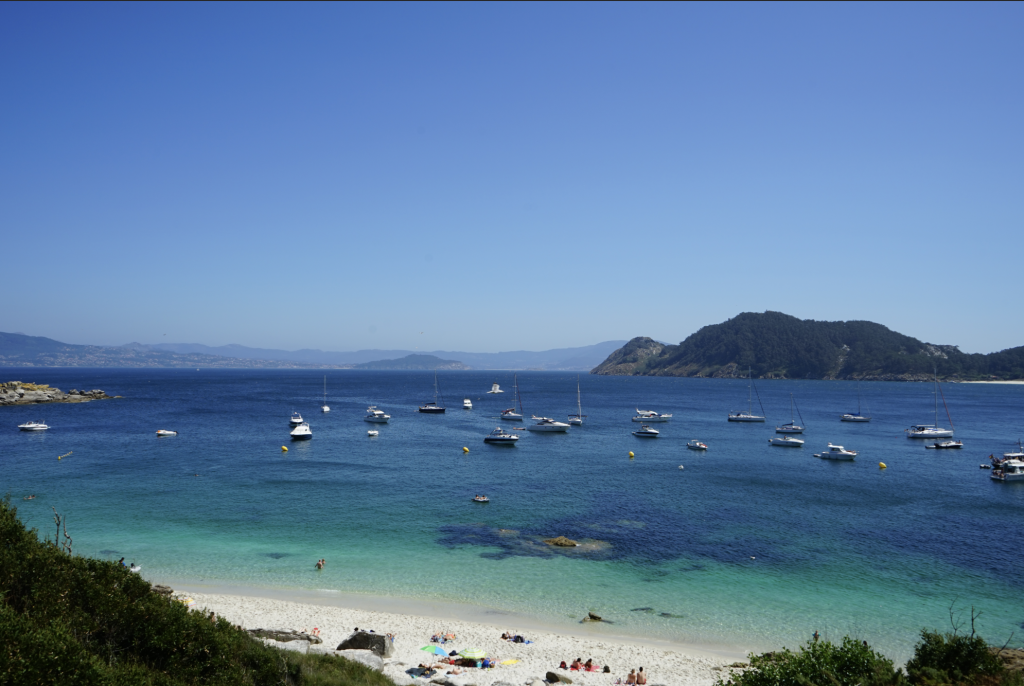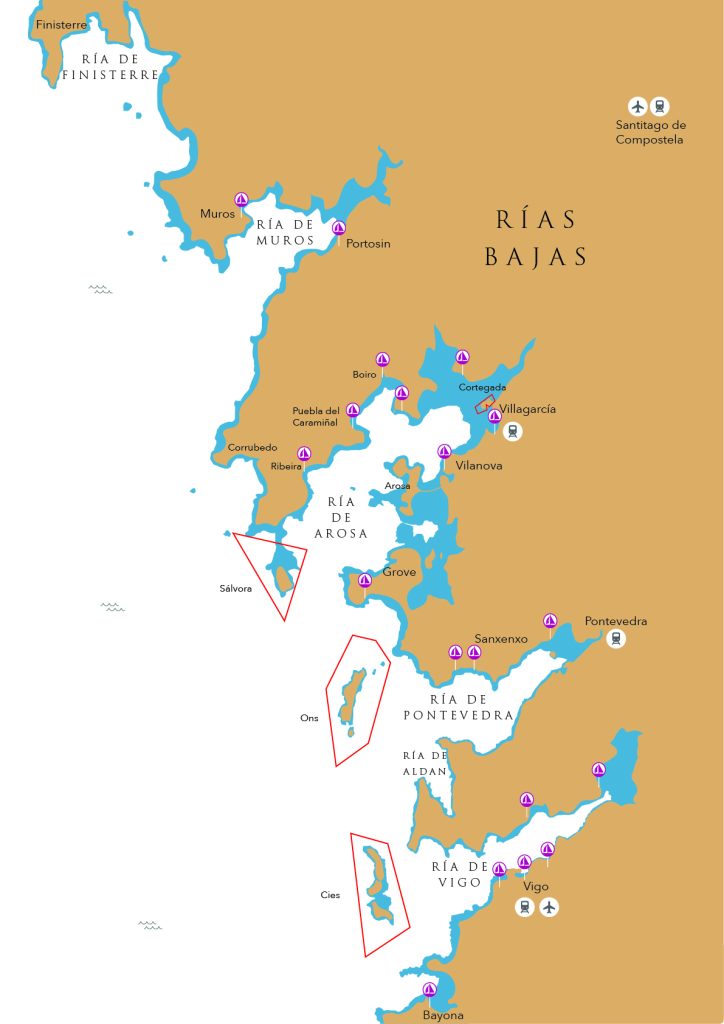Here you will find an overview of the archipelago Illas Atlanticas. What they offer to the sailors, when to go and what is allowed and forbidden in the park.
OVERVIEW
As breakwaters designed to protect the rías, these islands emerge in front of the Ría de Arosa, Pontevedra and Vigo. These archipelagos have been declared a special protection area in 2002 Its access is restricted to a number of people per day and anchoring is only allowed on some islands and limited to some beaches.
Its fame is due to the beauty of its beaches and cliffs. There are no cars, buildings or hotels. The beach of Rodas was declared the best beach in the world by The Guardian newspaper.
They are oriented from North to South. Its West face is rugged and steep and is totally exposed to swell. Its East face is sheltered and it is where the sandbanks and settlements are formed.
They offer anchorages in front of wild beaches in a well-preserved natural environment. Some, like Ons, also have some options on land where you can try Galician cuisine in an island style.
it is a must stop for sailors whenever the weather allows it. They are in an exposed area where the wind and temperature are always worse than on the coast. The temperature of the water is also usually a few degrees colder than in the rías.
In the past, the islands were inhabited and some, like Sálvora, were even private. Fishing was the main activity of its inhabitants. You can still see its vestiges and settlements. Today they have become tourist destinations to spend the day. In high season (July-August) thousands of people visit them through the many ferries that come and go from nearby towns (Grove, Portonovo, Bueu, Cangas, etc.). Ferries only go in summer.
Some are completely uninhabited such as Sálvora, Cortegada and Cies. Others, like Ons, maintain the fishermen’s houses that existed before they belonged to the park.
The park protects both the islands and the waters that surround them. The yellow-legged gull and the cormorant breed in the park and form one of the largest communities in Europe. Its waters are very rich. Fishing with traditional gear is allowed but sport fishing is prohibited.
SALVORA
It is the smallest and the least visited. Also in which there are more restrictions. Surrounded by islets, its rocky landscape is attractive and mysterious at the same time. It has small coves with crystal clear waters. You can go down to walk around the island and visit its old town and the lighthouse. Their sunsets are special.
It is only allowed to anchor in the beach of the Warehouse. Here it is rare that the limit of 25 capacity places is met, you can improvise the visit.
ONS
It is the liveliest. Until recently inhabited by families of fishermen, today visitors arrive by ferry to spend the day, or stay overnight in the campsite or cottages. It has a small core where there are several options to eat and buy some groceries.
You can anchor on Melide beach, with crystal clear waters and fine white sand (Exceptional for snorkeling). You can also anchor next to the breakwater to go down for dinner and enjoy the atmosphere of the port.
CIES
They are the most famous. They are a must stop for all sailors passing through Galicia. Its visual beauty, its virgin beaches and its island flavor are its main attractions.
The archipelago is made up of three islands: La Norte or Monteagudo, Faro and San Martiño or La Sur.
All three are somewhat mountainous with a steep west face. The east face has somewhat gentler slopes covered by forests and offers 3 wild beaches to anchor.
Playa de Rodas, Playa de Nuestra Señora and Playa de San Martino.
On the North Island you can go down for a walk around the island and go up to the lighthouse to contemplate the views and the sunset.
San Martiño is totally wild and you can only go there by private boat. Its beach is also exceptional.
WHEN TO GO
The islands are very exposed to the wind. Especially to the NE. They are oriented from North to South and despite the fact that they have a somewhat elevated orography, they do not offer protection from almost any wind. Due to their location, the wind that runs parallel to the coast blows intensely on them.
To visit them, choose a calm day and avoid going on cool Northeast days.
Weekends in July and August are the busiest days. pleanty of visitors who go on ferries and ships anchored. It will cost you more to reserve your place.
REQUEST PERMISSION TO VISIT THE PARK
Access to the islands is limited. There are a number of anchoring allowed for each island and day. To visit them you have to request permission from the Park. The permision can be requested online, but first you have to register at the Park.










